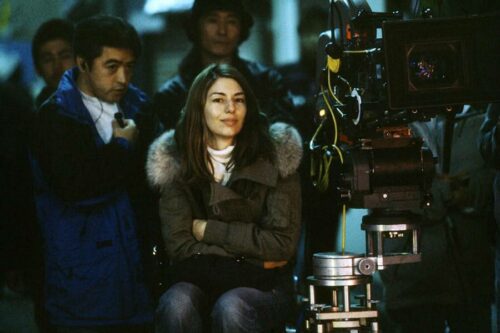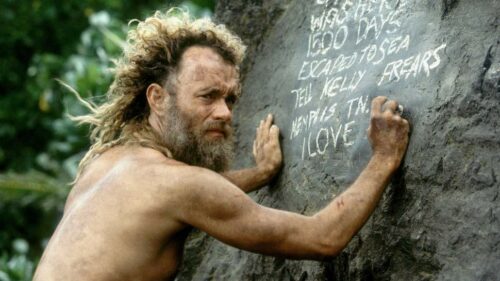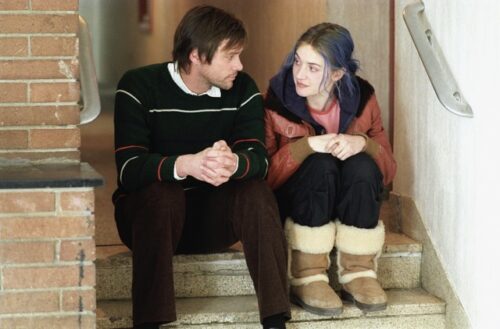One of the most difficult to effectively convey, yet most powerful themes when done right in storytelling, is the struggle between intimacy and isolation.
Intimacy vs. isolation is one of the most relatable themes in film. Still, it’s extremely hard to convey in a way that feels real and effective to audiences, likely due to how close to home this conflict hits for many people.
In this Intimacy vs. Isolation Guide, we’ll dive into the significance of intimacy vs. isolation in film, why it’s such a powerful storytelling mechanism, and highlight five of the best examples of this conflict we’ve seen on screen.
Questions We’ll Answer About Intimacy vs. Isolation In Film:
- Why Is Intimacy Vs Isolation A Powerful Storytelling Tool?
- What Are The Top 5 Examples Of Intimacy vs. Isolation In Film?

Why Is Intimacy Vs. Isolation A Powerful Storytelling Tool?
Relatability
Intimacy vs. Isolation, at its core, is a potent storytelling tool simply because of how relatable this internal conflict is. Every human has at least a slight urge to be social and create meaningful connections with others- romantic or platonic.
However, at the same time, we also battle with the need for personal space, self-discovery, and even isolation. These two needs are, of course, entirely different from one another, which is what makes this conflict so complex.
As we’ll see in some of the films listed below, too much of one, especially isolation, can have drastic implications for the human psyche.
Because Intimacy vs. Isolation is such a delicate balance of internal needs, when it’s portrayed on screen meaningfully, it creates a connection that allows us to profoundly relate to the characters we see on screen.
Often, the more complex the emotion or internal conflict, the more connected we feel for a character when done correctly. “When done correctly” is the key phrase here because when portrayed incorrectly, we quickly lose any sense of connection to a character, and often, these emotions can come off as comedic or downright hard to watch.
Character & Plot Development
Intimacy vs. isolation is also a massive tool to help a character grow and develop because of how much self-discovery they make when faced with this conflict.
Intimacy vs. isolation requires a character to reflect deeply on their needs and desires, often forcing them to explore their deepest fears and vulnerabilities.
While facing these fears and coming to terms with any vulnerabilities, a character typically has a moment of self-realization, allowing them to transform or change their behavior or situation.
These moments of change allow for significant shifts in the plot of a film and are an excellent way to thrust the story forward.
What Are The Top 5 Examples Of Intimacy Vs. Isolation In Film?
NOTE: There may be some minor spoilers in the section below. We did our best to recap the intimacy vs. isolation conflicts in each film without totally spoiling the movie, but some plot points did need to be revealed!

LOST IN TRANSLATION
Directed by Sofia Coppola, Lost In Translation portrays one of the best examples of intimacy vs. isolation conflict in cinema history.
The film follows Bob and Charlotte as they grapple with the struggles and loneliness of being thousands of miles away from home in Tokyo, Japan.
Bob and Charlotte accidentally stumble upon each other one day, and they begin to bond deeply, filling the gap of isolation they both feel being so far away from home.
As the film goes on, the two characters struggle with their longing for each other and the fear of isolation they may have to return to.

BLACK SWAN
Black Swan shows the impacts of isolation when career or other aspirations become such a priority and focal point in your life that you cut off all semblance of intimate human connection to reach these goals.
In Black Swan, Nina is obsessed with her career as a ballet dancer and has practically cut herself off from the world outside of ballet to ensure ballet is her only priority and focus in life.
We see the mental tolls of this level of isolation come alive in the form of intense hallucinations and paranoia that Nina suffers from as she falls more and more out of touch with reality.
As the film progresses, we see Nina develop an intimate relationship with another dancer and the effects of this relationship on her life – it’s exciting to watch as Natalie Portman (who plays Nina) does an incredible job of conveying what it would be like for someone to have an intimate relationship after being severely isolated for so long.
Black Swan is an excellent example of the consequences of severe, prolonged isolation and how the need for intimacy can overpower even individuals who willingly put themself into intense isolation.

HER
HER is one of film’s most unique examples of intimacy vs. isolation, portraying a thought-provoking relationship between humans and artificial intelligence.
Theodore, the film’s main character, has just gone through a difficult divorce, which has led him to remove himself from nearly all human contact.
During this period of isolation, he slowly builds a connection with Samantha, a virtual assistant powered by artificial intelligence.
The relationship starts to become more and more romantic, which causes Theodore to take a step back and assess his relationship with Samantha and how his connection with this virtual assistant might be feeding his isolation.
The film makes us wonder if Theodore is creating a meaningful, intimate relationship with a virtual being or becoming increasingly isolated with a false sense of intimacy.

CAST AWAY
Cast Away shows one of the most extreme examples of intimacy vs. isolation when the film’s main character, Chuck Noland, survives a plane crash and is stranded on a desert island.
Chuck is deprived of any human interaction and while he can manage this isolation at first, it slowly begins to drive him desperate and insane.
With the impacts of prolonged isolation beginning to weigh more and more on Chuck, he creates a friend for himself out of a volleyball, which he names Wilson as an attempt to have any intimate connection in his life.
At the film’s end, we are left with an ambiguous moment when Chuck reflects on his isolation compared to the constant connections of everyday “normal life.”
In this moment, many can assume that despite living through a period of extreme isolation, Chuck is struggling between the needs of seclusion and intimacy and how he can balance these two needs.

Eternal Sunshine Of The Spotless Mind
Eternal Sunshine Of The Spotless Mind follows Joel and Clementine, a couple who both undergo a futuristic treatment to remove all memories of each other after they break up.
The film shows another extreme example of intimacy vs isolation as Clementine first decides to undergo the treatment after she decides her intimate memories of Joel are too hard to bear.
Joel undergoes the treatment shortly after finding out that Clementine has, and while he is getting his memories erased, he relives his memories of Clementine, both good and bad.
Despite this desperate need for isolation from each other, the couple is drawn together again by using their last remaining memories of each other – a poignant example of how powerful the need for intimacy can be, even when you may not truly realize it.
LEARN MORE ABOUT STORY AND CONFLICTS IN FILM!
Ultimate Guide To Person vs. Person Conflict In Film
Person vs. Self Conflict In Film | 10 Best Examples
Ultimate Guide To Person vs. Fate/God In Cinema
Person vs. Nature In Film | 10 Best Examples
Ultimate Guide To Person vs. Technology Conflict In Film
Person vs. Supernatural Conflict In Film | 10 Greatest Examples
Photos are copyright of and used courtesy of Focus Features, Fox Searchlight, 20th Century Fox, and Warner Brothers
